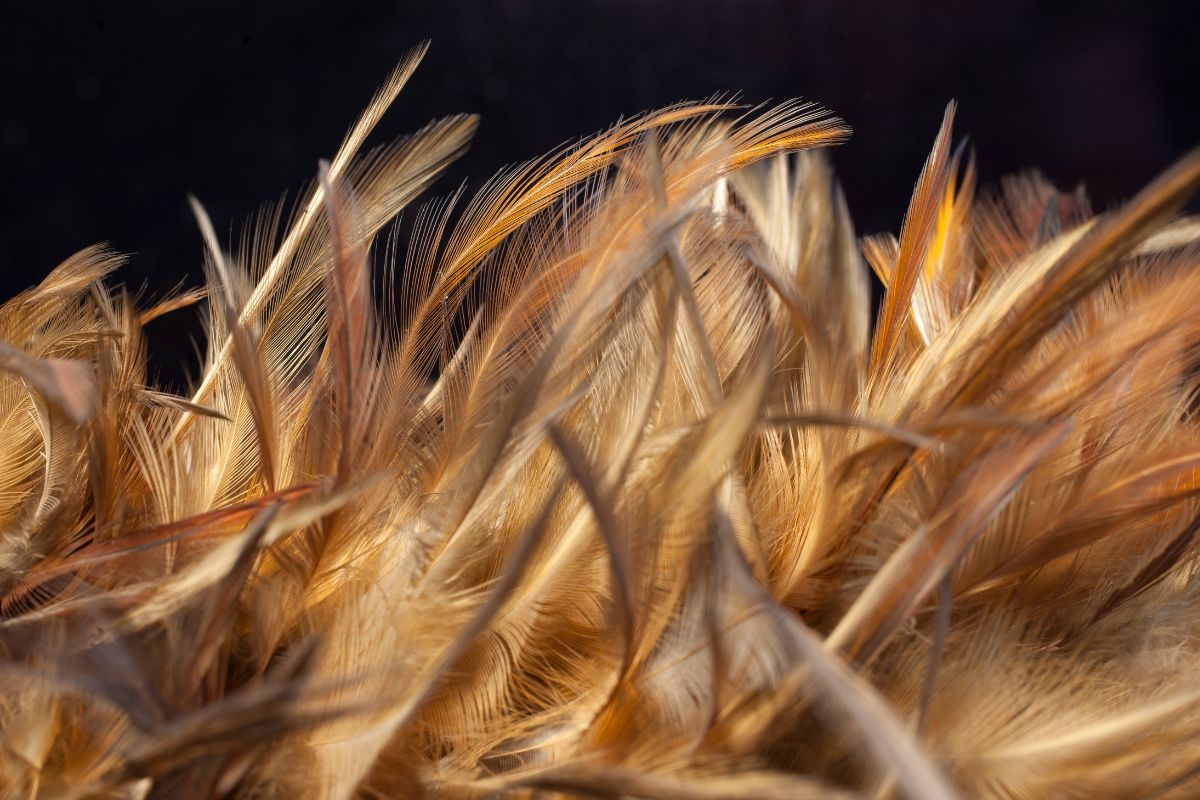
Are chicken feathers the key to cheaper and cleaner hydrogen fuel cells?
October 26, 2023Researchers may have found a way to kill two birds with one stone.
ETH Zurich scientists have discovered a way to repurpose chicken feathers by turning them into a vital component for renewable hydrogen fuel cells. Instead of becoming waste that’s incinerated and contributing to the pollution problem, the feathers could replace the non-biodegradable and toxic “forever chemicals” used to manufacture hydrogen fuel cells, effectively solving two problems with one solution.
Keratin is the key.
Like human fingernails and hair, chicken feathers are mostly made up of keratin. Throughout their lives, chickens produce loads of feathers. While this is entirely normal, it’s a problem for the food industry which currently incinerates an estimated 40 million metric tons of chicken feathers during the poultry production process. Incinerating these feathers releases harmful fumes into the air, including carbon and sulfur dioxide.
ETH Zurich and Nanyang Technological University Singapore (NTU) scientists have come up with a way to extract keratin from chicken feathers and spin this tough protein into thin fibers known as amyloid fibrils.
Once spun into these fibers, the fibrils can be installed as the vital semipermeable membrane in hydrogen fuel cells. A hydrogen fuel cell requires a semipermeable membrane. This membrane allows protons to pass through while excluding electrons. The electrons that are blocked are forced to travel through an external circuit from a negative anode to a positive cathode, creating electricity. Traditionally, these membranes are made up of extremely poisonous “forever chemicals”.
Cleaner and cheaper hydrogen fuel cells.
The semipermeable membrane that ETH and NTU researchers developed is mainly composed of biological keratin. Chicken feathers are 90% keratin, are available in large quantities and are environmentally compatible. As such, the membrane manufactured in the lab is not only less toxic, but already as much as three times cheaper than traditional membranes for hydrogen fuel cells.

“I’ve devoted a number of years to researching different ways we can use food waste for renewable energy systems,” Raffaele Mezzenga, Professor of Food and Soft Materials at ETH Zurich said.
“Our latest development closes a cycle: we’re taking a substance that releases CO2 and toxic gases when burned and used it in a different setting: with our new technology it not only replaces toxic substances, but also prevents the release of CO2, decreasing the overall carbon footprint cycle.” Mezzenga added.
Benefits to electrolysis as well.
 In addition to the use of keratin membranes potentially leading to less toxic and cheaper hydrogen fuel cells, the membrane could also be used in water splitting, a process known as electrolysis.
In addition to the use of keratin membranes potentially leading to less toxic and cheaper hydrogen fuel cells, the membrane could also be used in water splitting, a process known as electrolysis.
Being permeable to protons, the new membrane makes particle migration between anode and cathode possible, which is necessary for efficient water splitting, even in pure water.
The scientists research paper was published through ACS Applied Materials & Sciences.
Ready to test your knowledge on the most abundant element in the universe? Take our fun and engaging Hydrogen Quiz now! [forminator_quiz id=”58712″]



 With over 15 years of reporting hydrogen news, we are your premier source for the latest updates and insights in hydrogen and renewable energy.
With over 15 years of reporting hydrogen news, we are your premier source for the latest updates and insights in hydrogen and renewable energy.
Chicken feathers will add extra value ti the polutry industry. Good news to the chicken farmers.